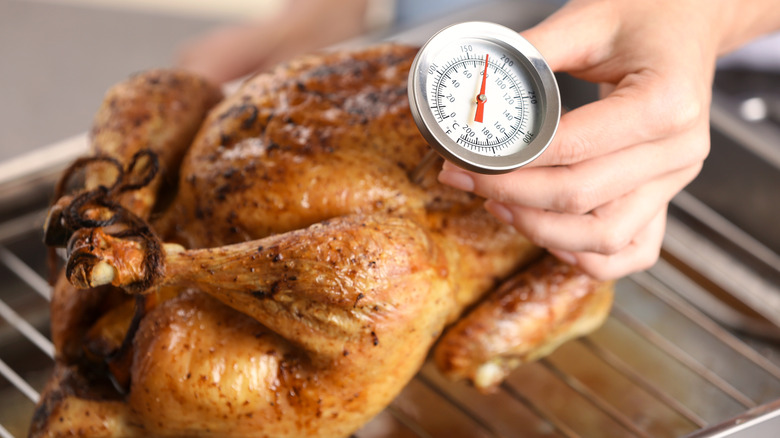What Is Carryover Cooking Exactly? Rachael Ray Explains
It's steak night, and you temp-check your sizzling ribeye steak. It's at 135 degrees Fahrenheit — a perfect medium-rare. You pull out the steak and let it rest while you finish up your sides, as the television chefs do. When it's time to eat, you cut into your steak, and instead of the medium-rare you expected, your steak is well into medium territory. Or, in a similar kitchen nightmare, your pasta is perfectly al dente when you drain it, but mushy once it's stirred with a ladle of sauce. What gives?
You've been a victim of carryover cooking. This phenomenon is why savvy cooks pull meat, pasta, and other foods away from the heat source a few degrees shy of its recommended temperature of doneness.
@rachaelray My #1 tip for making sure your pasta has the perfect "bite" 😁 #fyp #cookingtips #foryoupage #rachaelray #letscook #tiptok #learnontiktok #cooking #tips #pasta
As Rachael Ray explains, undercooking your pasta by at least a minute (when it still has more bite than you'd like) will ensure that it's at the perfect texture and temperature when you sit down to eat. This is especially true if you finish your pasta in another pan with sauce, as you do with clams and linguine or spaghetti carbonara, or if you're going to be putting the pasta in the oven for baked ziti or macaroni and cheese. In those cases, if the pasta is already fully cooked when you drain it, it'll be overcooked on your plate. This handy rule of thumb is also great to keep in mind when it comes to roasts, steaks, and poultry.
Carryover cooking can quickly take your meat from perfect to overdone
Meat is especially susceptible to accidental overcooking via carryover cooking. This is because whatever you're cooking — be it chops, steak, or your Thanksgiving turkey — is cooked from the outside. Even when the protein is removed from the heat source, the residual heat will continue to make its way inside, cooking and raising the internal temperature. This process can last up to 20 minutes, overcooking your food even while it rests at room temperature.
Carryover cooking is affected by the cut and thickness of your meat and at what temperature you cook it. An experiment by ThermoBlog showed that a 3-pound pork loin cooked at 425 degrees Fahrenheit and pulled at 140 degrees had 15 degrees of carryover cooking after resting. On the other hand, two quarter-pound pork chops cooked at 300 and 425 degrees Fahrenheit and pulled at 140 experienced 4.9 and 11.5 degrees of carryover cooking, respectively.
So, get yourself a good instant-read thermometer and remember that you're not looking for the ideal temperature right now; you should be thinking 10 to maybe even 20 minutes in the future. Take into consideration the size and cooking temperature of the cut and if you still need to do something else to it, like searing or tossing with sauce. However, avoid pulling poultry that hasn't hit at least 160 degrees Fahrenheit in the thigh or under the wing. The closer you get to 165 degrees without going over, the better.

